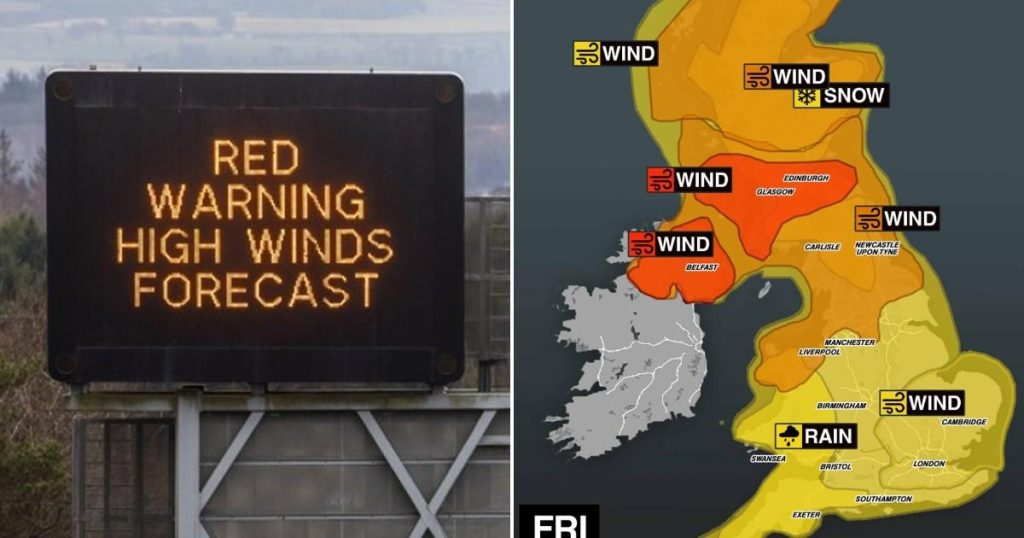Storm Eowyn, a severe weather event bringing 100mph winds and posing a “danger to life,” prompted widespread school closures across Northern Ireland and parts of Scotland. The storm, described as a once-in-a-century occurrence, triggered a red weather warning, the highest level of alert, for Northern Ireland and some regions of Scotland. A tornado warning was also issued for areas spanning from Bristol to London. The rest of the UK remained under amber and yellow warnings, signifying a less severe but still significant threat. Officials urged residents in the most affected areas to avoid all non-essential travel and stay indoors.
In Northern Ireland, the Department of Education instructed all schools to close as the storm’s peak was anticipated. This closure encompassed every council area within the country, impacting hundreds of thousands of students. First Minister Michelle O’Neill underscored the seriousness of the red warning, emphasizing the genuine risk to life and property. She highlighted potential disruptions to travel and power outages due to the extreme conditions. The government, along with partner agencies and emergency services, mobilized to prepare for and address the storm’s impact. The public was urged to prioritize safety, check on vulnerable individuals, and limit travel to essential journeys only.
Scotland also witnessed school closures in several council areas, including Glasgow City, East Ayrshire, North Ayrshire, West Lothian, East Lothian, West Dunbartonshire, Midlothian, Inverclyde, South Lanarkshire, North Lanarkshire, Argyll and Bute, East Renfrewshire, and Renfrewshire. Within Aberdeenshire Council, a long list of specific schools, from primary to academy level, were closed due to the extreme weather. First Minister John Sweeney echoed the warnings for residents to avoid travel and stressed the rarity and seriousness of the red weather warning. He urged the public to heed the advice issued by the Met Office and the police.
Wales experienced localized school closures, particularly in Anglesey and Gwynedd. In Anglesey, several school catchments, including Syr Thomas Jones, Bodedern, and Caergybi, implemented closures encompassing numerous primary and secondary schools. Gwynedd also saw closures in Ysgol Brynrefail, Ysgol Pendalar, and Ysgol Tryfan. These closures aimed to ensure the safety of students and staff amidst the hazardous conditions.
The widespread closures underscore the significant impact of Storm Eowyn on daily life and the prioritization of safety in the face of extreme weather events. The warnings from officials emphasized the potential for life-threatening situations, highlighting the need for precautions and responsible behavior. The coordinated responses from government agencies, schools, and emergency services aimed to mitigate the storm’s impact and ensure public well-being.
Beyond school closures, the storm’s effects reached various aspects of life. Emergency alerts were issued to millions of phones, providing warnings and advice on staying safe during the storm. Travel advisories were released for road, rail, sea, and air routes, cautioning against unnecessary journeys given the high winds and potential for disruptions. The severity of Storm Eowyn drew comparisons to historical tornado events in the UK, including a particularly devastating incident in 1666.
The comprehensive response to Storm Eowyn demonstrates the significant impact of extreme weather and the importance of preparedness. The widespread closures and travel disruptions reflect the prioritization of public safety. The coordinated efforts of various agencies and officials, coupled with public compliance with safety guidelines, are crucial in navigating such challenging weather events. The storm serves as a reminder of the potential risks associated with severe weather and the need for awareness, vigilance, and proactive measures.











